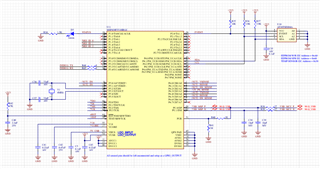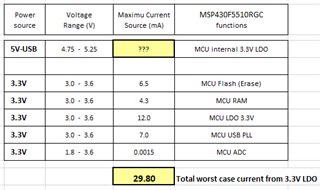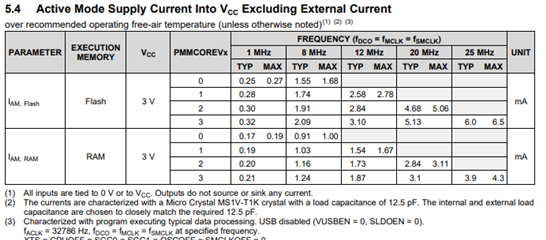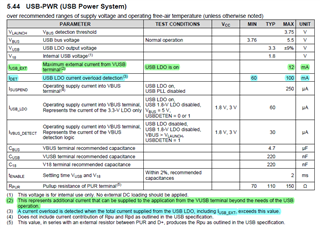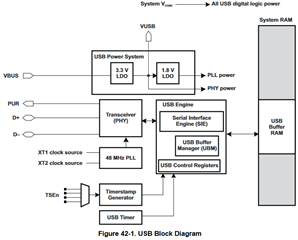I am trying to estimate the total worst case current during USB operation for 3.3V from internal LDO and 5V from USB connected to pin Vbus of MCU. Two attachments below show the circuit with the MCU and table for listing maximum current consumed by each MCU function.
- Could you please estimate total worst case currents for 3.3V from internal LDO (excluding external 12 mA) and 5V from external USB-host?
- What are maximum allowable currents for 3.3V LDO and 5V from external USB-host?
I listed individual maximum current for each MCU function on the table below. If I missed, please provide a list of other currents to be considered.
Thanks,
Albert
